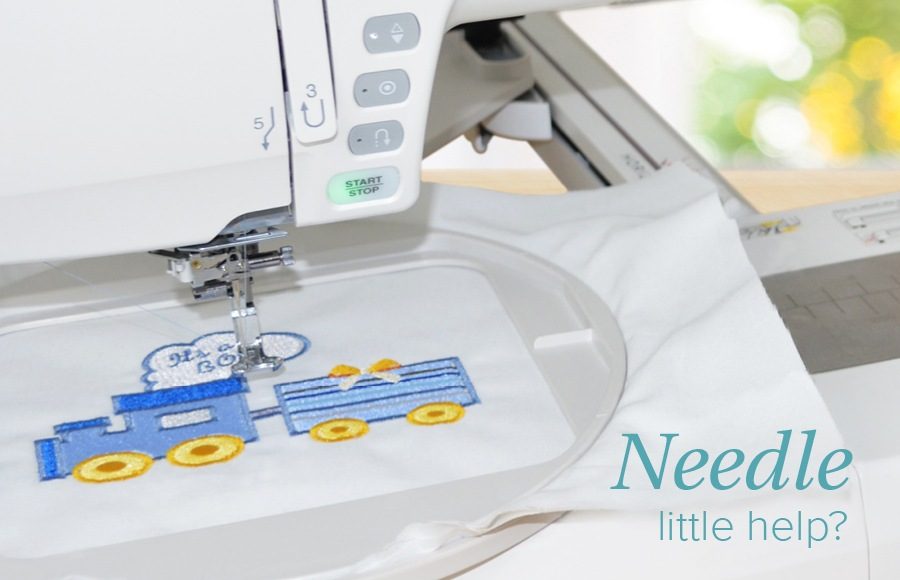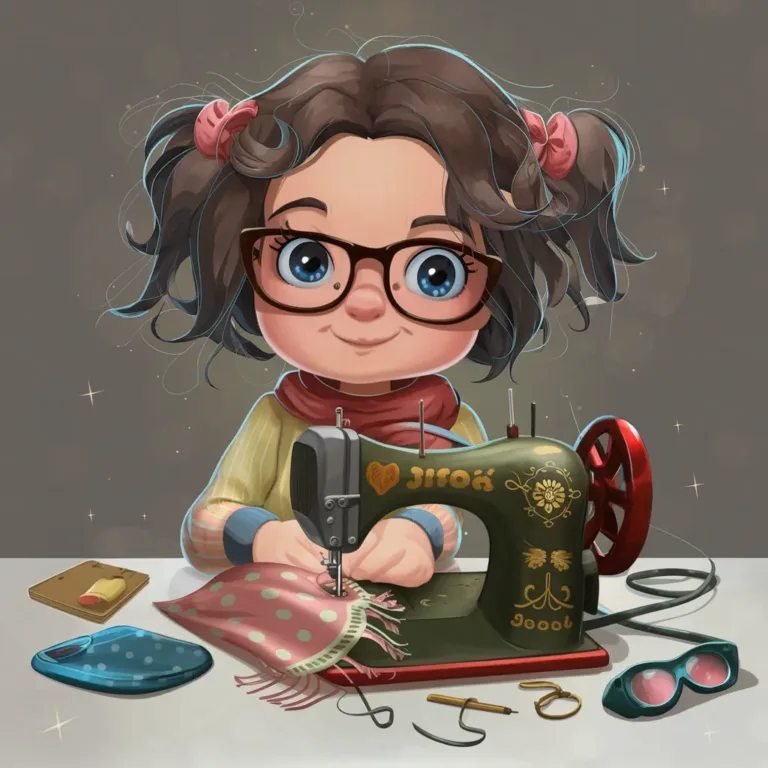In the past, needle choice was limited to different needle sizes,
but the current market offers so many choices, making it overwhelming. Learn the basic
needle options to narrow down the choices and make needle selection easier.
SYSTEM
• The needle system is denoted on the package by a
series of numbers/letters (A). There are many needle
systems for commercial machines, but most home machines
use the 130/705H system. Check your machine
manual for the needle system that your machine uses.
The needle system number is listed on all needle
packages, regardless of the needle type or use. The
needle system number may be followed by a dash
and another letter. That letter refers to the needle
type, such as 130/705H-J for Jeans or 130/705H-E
for Embroidery.

SIZE
• The needle shaft size is denoted by a set of two numbers, such as 80/12, on the package. The first number is the European metric number, and the second number is its American equivalent. The larger the number, the larger the needle shaft. Needle sizes range from 60/8 to 120/19. The needle size is also stamped on the rounded side of the shank, along
with the needle brand. Use a large magnifying glass to view the size.
• Choose the needle size according to the project fabric. Heavier fabric requires a larger needle
in order to penetrate the heavy fibers. Lightweight fabric requires a smaller needle to avoid leaving large holes in the fabric. The most commonly used sizes are 75/11 or 80/12 for general sewing.
• Also consider the thread type and size when choosing a needle size. Smaller needles have smaller eyes and are suitable for lightweight thread. Similarly, larger needles have larger eyes and are suitable for heavier, thicker thread.
NEEDLE TIP
• There are a variety of needle tip options appropriate for different fabrics. The three most common types are sharp, ballpoint and universal.
• Sharps have the sharpest point and are used when stitching fabric that’s difficult to penetrate. Ballpoint needles have a slightly rounded tip. Use this needle type when stitching knits, as the point nestles between the fabric yarns instead of cutting them and causing
a hole in the fabric. Universal needles are a cross between the two. These all-purpose needles
can be used on a variety of fabrics, including woven fabrics and some knits.
TYPE
• Different needle types are manufactured to accommodate different thread, fabric or for different applications. The groove and the eye are altered depending on the intended use. There are special needle types for many different kinds of sewing and thread.
• The long needle groove cradles and protects the thread as it travels down to the needle eye. The groove must be large and deep enough to accommodate the chosen thread, or thread breakage may occur.
• The needle eye must also be large enough to accommodate the thread. The shape may be
elongated or enlarged depending on the specific use and thread it’s designed for. Reference
your machine manual for specific needle suggestions.

EMBROIDERY NEEDLES
• Always use a high-quality needle. This is especially important for machine embroidery because of the high speed of the machine.
• Use needles designed specifically for machine embroidery. Embroidery needles have a slightly rounded point and a larger eye to accommodate the thread as it moves rapidly back and forth through the eye. This helps prevent thread shredding and breakage.
• Embroidery needles are available in sizes ranging from 65/9 to 90/14. As with sewing, use a smaller needle for lightweight fabrics and a larger needle for heavier fabrics. The most commonly used sizes are 80/12 and 75/11.
• Purchase ballpoint embroidery needles when embroidering knit fabrics. The rounded tip slides between the knit yarns instead of cutting them as a universal embroidery needle could. This is especially important when embroidering on a lower-quality knit fabric. You might not notice the difference during embroidery, but when the garment is washed and worn, small holes or runs may appear around the design perimeter.
• Some embroidery needles, such as Organ Titanium Coated Embroidery Needles, have a special coating that helps keep the needle tips intact.
They’re more expensive than a standard embroidery needle, but last considerably longer. These needles work well when embroidering with adhesive- backed stabilizers, as the coating prevents the adhesive from adhering to the needle. However, continue to check periodically (at least during each thread change) to see if a ball of adhesive has formed on the needle blade/shaft. Clean the adhesive from the needle using a cotton swab slightly moistened with alcohol or water.







fantastic I shared with all my friends
Hi! I realize this is somewhat off-topic however I needed to ask.
Does managing a well-established blog like yours require a massive amount work?
I am completely new to operating a blog but I do write in my diary everyday.
I’d like to start a blog so I can easily share my own experience and feelings online.
Please let me know if you have any ideas or tips for new aspiring blog owners.
Appreciate it!
I’m amazed, I have to admit. Rarely do I come across a blog that’s equally educative and engaging, and let me tell you, you have
Greetings from Florida! I’m bored at work so I decided to check out your website on my iphone during lunch break.
I love the information you provide here and can’t wait to take a
look when I get home. I’m surprised at how quick your blog loaded on my phone ..
I’m not even using WIFI, just 3G .. Anyways, fantastic
site!
I have read so many posts on the topic of the blogger lovers however this post is genuinely a good post, keep it up.